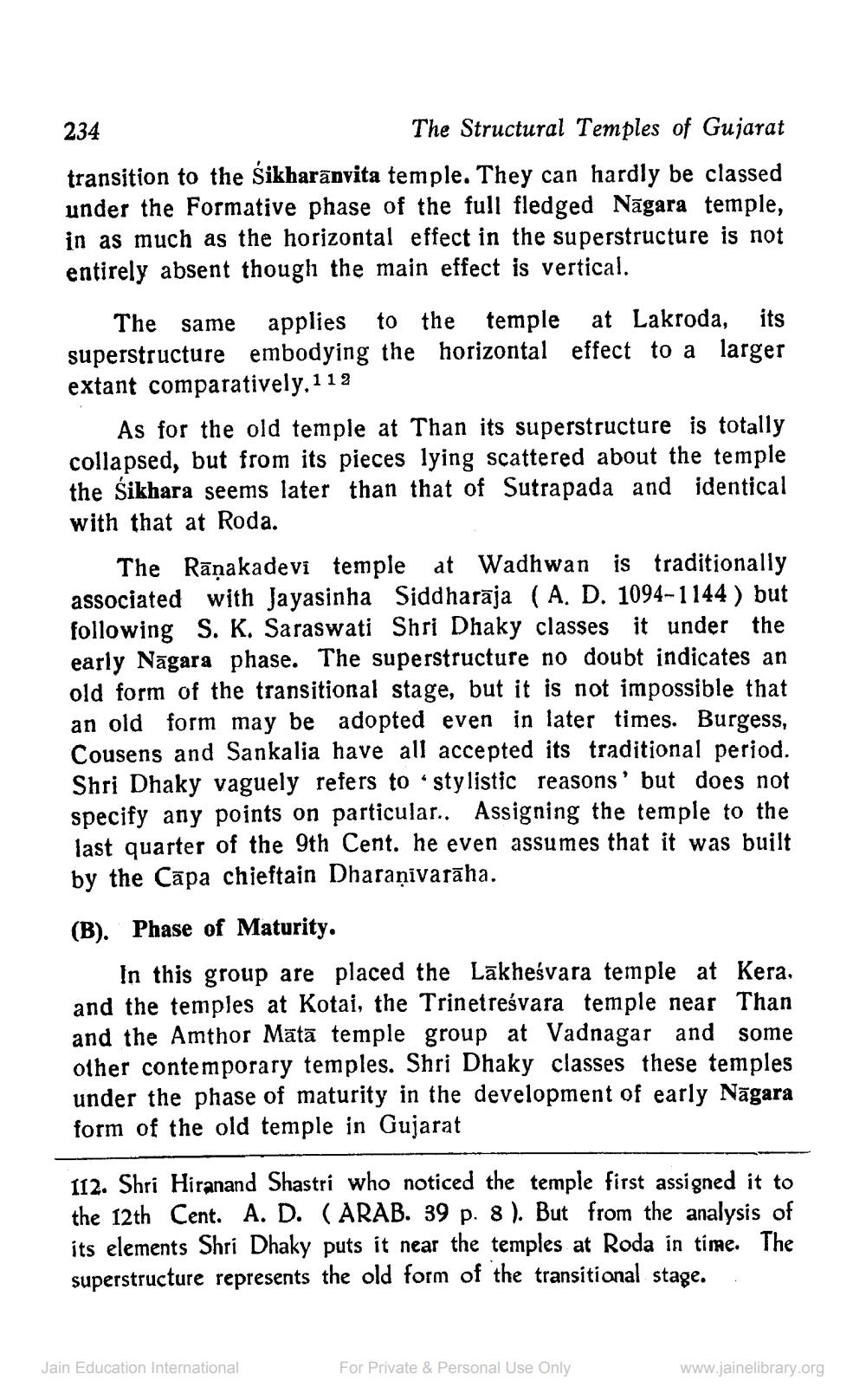________________
234
The Structural Temples of Gujarat transition to the Sikharānvita temple. They can hardly be classed under the Formative phase of the full fledged Nāgara temple, in as much as the horizontal effect in the superstructure is not entirely absent though the main effect is vertical.
The same applies to the temple at Lakroda, its superstructure embodying the horizontal effect to a larger extant comparatively, 112
As for the old temple at Than its superstructure is totally collapsed, but from its pieces lying scattered about the temple the Sikhara seems later than that of Sutrapada and identical with that at Roda.
The Rāņakadevi temple at Wadhwan is traditionally associated with Jayasinha Siddharāja (A. D. 1094-1144 ) but following S. K. Saraswati Shri Dhaky classes it under the early Nāgara phase. The superstructure no doubt indicates an old form of the transitional stage, but it is not impossible that an old form may be adopted even in later times. Burgess, Cousens and Sankalia have all accepted its traditional period. Shri Dhaky vaguely refers to stylistic reasons' but does not specify any points on particular.. Assigning the temple to the last quarter of the 9th Cent. he even assumes that it was built by the Capa chieftain Dharaṇivarāha.
(B). Phase of Maturity.
In this group are placed the Lākheśvara temple at Kera. and the temples at Kotai, the Trinetreśvara temple near Than and the Amthor Mātā temple group at Vadnagar and some other contemporary temples. Shri Dhaky classes these temples under the phase of maturity in the development of early Nāgara form of the old temple in Gujarat
112. Shri Hiranand Shastri who noticed the temple first assigned it to the 12th Cent. A. D. (ARAB. 39 p. 8). But from the analysis of its elements Shri Dhaky puts it near the temples at Roda in time. The superstructure represents the old form of the transitional stage.
Jain Education International
For Private & Personal Use Only
www.jainelibrary.org




